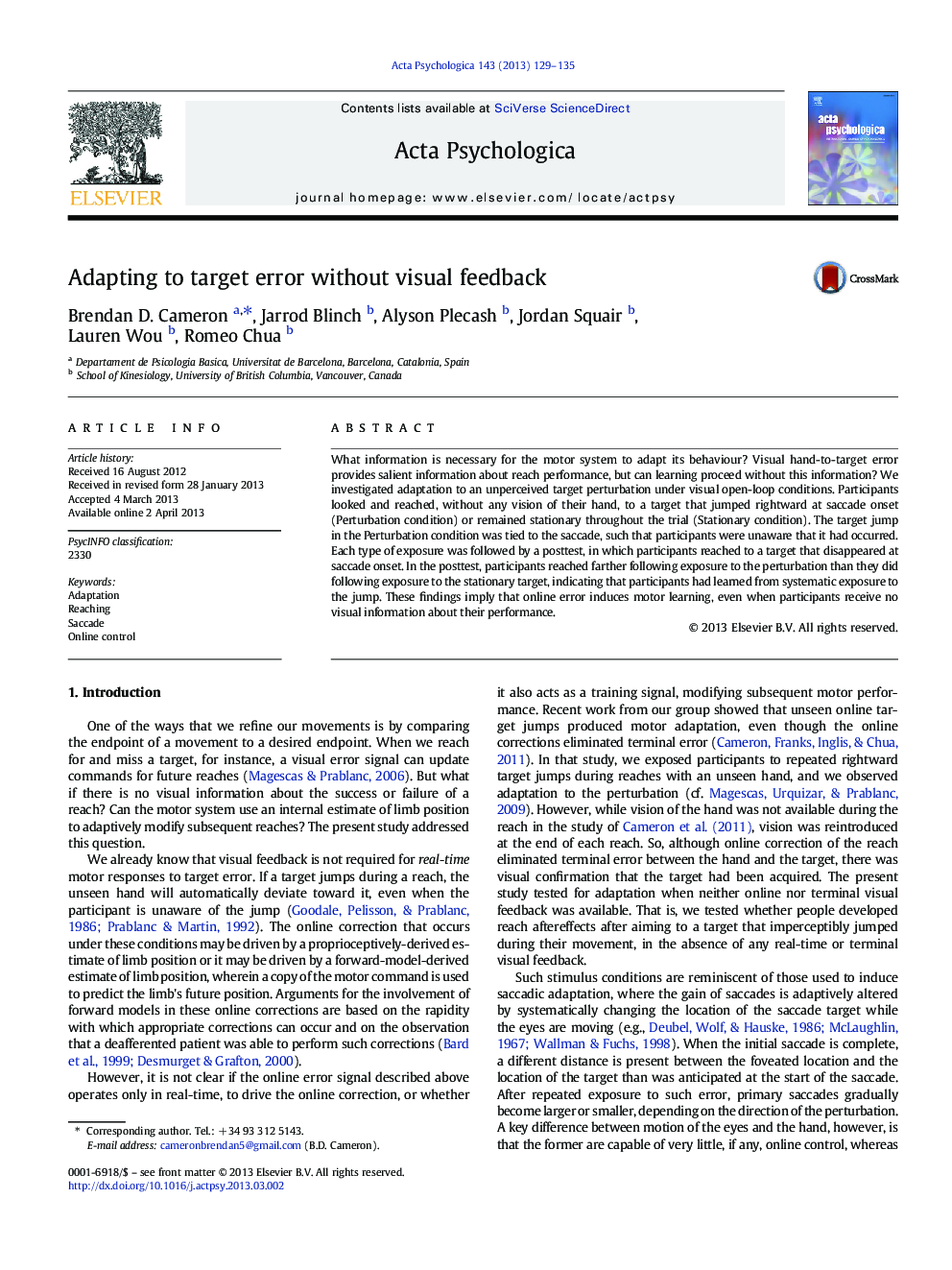| Article ID | Journal | Published Year | Pages | File Type |
|---|---|---|---|---|
| 919873 | Acta Psychologica | 2013 | 7 Pages |
•Exposure to online target error led to movement aftereffects.•This reach adaptation was not driven by saccadic adaptation.•The motor system may learn from non-visual online error signals.
What information is necessary for the motor system to adapt its behaviour? Visual hand-to-target error provides salient information about reach performance, but can learning proceed without this information? We investigated adaptation to an unperceived target perturbation under visual open-loop conditions. Participants looked and reached, without any vision of their hand, to a target that jumped rightward at saccade onset (Perturbation condition) or remained stationary throughout the trial (Stationary condition). The target jump in the Perturbation condition was tied to the saccade, such that participants were unaware that it had occurred. Each type of exposure was followed by a posttest, in which participants reached to a target that disappeared at saccade onset. In the posttest, participants reached farther following exposure to the perturbation than they did following exposure to the stationary target, indicating that participants had learned from systematic exposure to the jump. These findings imply that online error induces motor learning, even when participants receive no visual information about their performance.
